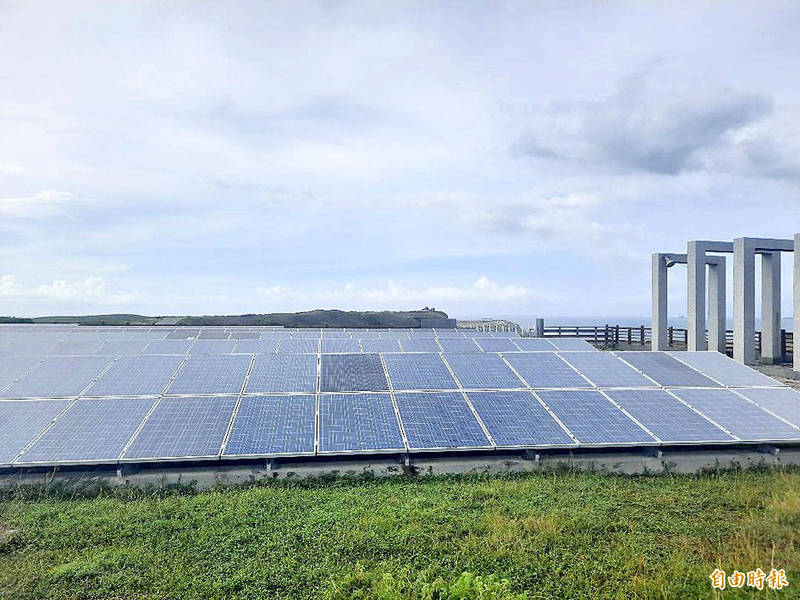《TAIPEI TIMES》 Rules to tie heavy electricity use to renewable power

Taiwan Power Co solar panels are pictured in Penghu County’s Cimei Township on Sept. 18 last year. Photo: Liu Yu-ching, Taipei Times
By Angelica Oung / Staff reporter
Entities that require a lot of electricity are tied to a five-year “green” energy consumption plan with the promulgation of “heavy electricity user” rules this year, the Ministry of Economic Affairs said yesterday, although experts added that the regulations would have a limited effect on the renewable energy market.
The total installed electrical capacity in Taiwan is 44.7 gigawatts (GW), Taiwan Power Co (台電) manager Chang Ting-shu (張廷抒) said.
According to the Ministry of Economic Affairs, the Regulations Governing the Chartered Capacity on Electricity Consumption Agreements Which the Users Shall Install Renewable Energy Facilities for Exceeding a Certain Capacity (一定契約容量以上之電力用戶應設置再生能源發電設備管理辦法), also known as the “major electricity users’ regulations,” would add 1GW to the renewable energy market by making Taiwan’s 300 largest users of electricity boost their renewable portion to 10 percent within five years.
“The goal is to instal 27GW in Taiwan by 2025, so 1GW is not much,” said Raoul Kubitschek, a renewable energy expert at the Taiwan branch of consultancy NIRAS Gruppen A/S.
“It will also not necessarily add 1GW to the 27GW, but be a part of it,” Kubitschek said.
President Tsai Ing-wen (蔡英文) has made 20 percent of electricity generation from renewable sources by 2025 a goal for Taiwan, while abolishing nuclear energy over the same period.
Kubitschek said that the threshold for being a “large user” should be lowered from 5,000 kilowatts to 800 kilowatts to put the regulations in line with Tsai’s goals.
Kubitschek’s sentiments were echoed by Tiffany Huang (黃台芬), a partner with international law firm Baker & McKenzie, and head of its construction and power project practice groups in Taiwan.
“From the renewable energy developer’s point of view, 1GW is not enough,” Huang said.
“Ten gigawatts will be released on the third round of the Offshore Wind Farm program alone,” she said.
According to Huang’s analysis, any government requirements regarding energy from renewable sources for large users is dwarfed by the appetite of the firms themselves.
“Look at the deal that Taiwan Semiconductor Manufacturing Co (台積電) signed with Orsted A/S,” she said.
“That is 920 megawatts on its own,” she said. “In just one deal, that is close to the 1GW that the large users’ regulations are supposed to create.”
However, the government has many factors to take into account when pushing renewable energy, Huang said.
“As an export-oriented country, we have kept retail electricity prices artificially low for 20 to 30 years,” Huang said.
“This makes renewable energy seem more expensive than it really is,” she said.
“They cannot push too much all at once,” Huang said. “It’s a start.”
新聞來源:TAIPEI TIMES


















